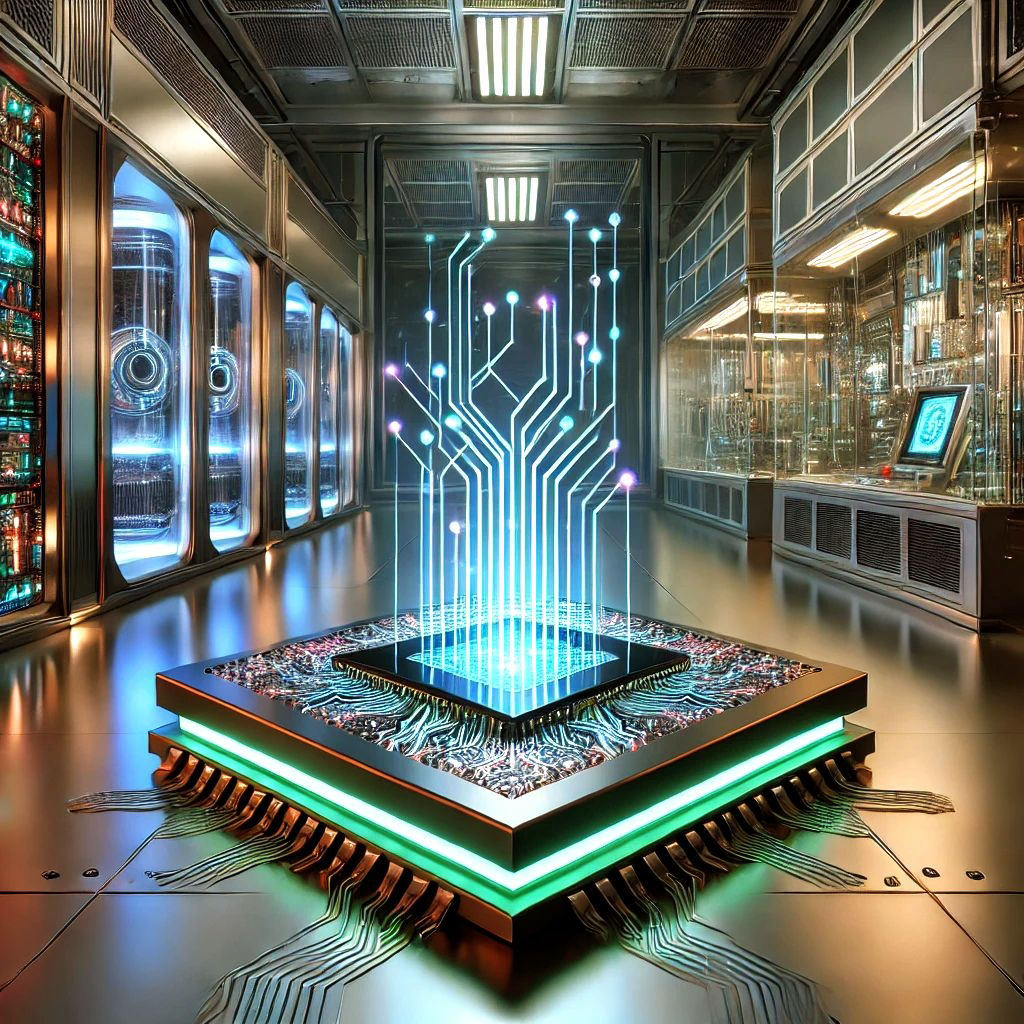Revolutionizing Computing: Google's Latest Quantum Chip Breakthrough
Introduction
The world of computing is on the verge of a revolutionary leap forward with the advent of quantum technology. Classical computers have long dominated, but as their limits become apparent, quantum computing promises to solve problems previously thought insurmountable. Google, a pioneer in this domain, has unveiled its latest quantum chip—a technological marvel that brings us closer to realizing the full potential of quantum computing.
This blog delves into the intricate details of Google's new quantum chip, its capabilities, and its potential to redefine the future of technology.
"Quantum Chip Breakthrough"
What is Quantum Computing?
Unlike classical computers that use bits (0s and 1s) for processing information, quantum computers use qubits. Qubits harness the principles of quantum mechanics, such as:
Superposition: A qubit can exist in multiple states (0, 1, or both) simultaneously, exponentially increasing computing power.
Entanglement: Qubits can be interlinked, so the state of one qubit directly affects another, even at vast distances.
Interference: Quantum algorithms use wave-like properties to amplify correct results and cancel out errors.
These features allow quantum computers to solve complex problems that classical systems would take years to compute.
The Latest Google Quantum Chip
Google’s latest chip, rumored to be called 'Sycamore X', represents a monumental step in quantum computing:
Scalability: The chip features an advanced architecture capable of handling significantly more qubits than its predecessors, reducing noise and improving coherence time.
Error Correction: A major hurdle in quantum computing has been managing errors caused by fragile quantum states. This chip introduces groundbreaking fault-tolerant systems that correct errors dynamically.
Processing Power: It reportedly performs calculations in seconds that would take classical supercomputers millions of years.
Google has also integrated the chip into its Quantum AI lab, enabling researchers worldwide to test algorithms and explore applications in various fields.
Applications of the New Chip
The new chip isn't just a theoretical improvement; it opens doors to numerous real-world applications:
1. Drug Discovery: Simulating molecular interactions to design drugs faster and more accurately.
2. Material Science: Predicting the properties of new materials without trial-and-error experimentation.
3. Artificial Intelligence: Enhancing machine learning models with faster and more efficient algorithms.
4. Financial Modeling: Solving complex optimization problems in finance, such as portfolio management.
5. Cryptography: While it poses risks to classical encryption, it also enables new forms of secure communication using quantum principles.
Challenges and Future Prospects
Despite the excitement, challenges remain:
Hardware Stability: Qubits are extremely fragile, and maintaining their quantum states is difficult.
Cost: Quantum systems require specialized environments, including ultra-low temperatures, making them expensive.
Scalability: Although Google's new chip is a leap forward, building a large-scale quantum computer still requires significant innovation.
However, Google’s quantum roadmap remains ambitious. The company aims to achieve 'quantum supremacy' in more real-world scenarios and develop commercial quantum systems within the next decade. Collaborations with academia and industry partners are accelerating these efforts.
Conclusion
Google’s latest quantum chip symbolizes the dawn of a new computing era. As this technology matures, it has the potential to solve humanity’s most pressing problems, from climate modeling to disease eradication.
This innovation not only underscores Google’s leadership in quantum research but also inspires the global tech community to push boundaries.
The journey from classical to quantum computing is challenging but inevitable. With breakthroughs like Google’s latest chip, we are steadily bridging the gap between science fiction and reality.
Stay tuned for more updates as quantum technology continues to evolve and shape the future!
"© 2024 Vignesh's World View. All Rights Reserved. Unauthorized use and/or duplication of this material without express and written permission from this blog’s author and/or owner is strictly prohibited. Excerpts and links may be used, provided that full and clear credit is given to Vignesh's World View with appropriate and specific direction to the original content."




Comments
Post a Comment